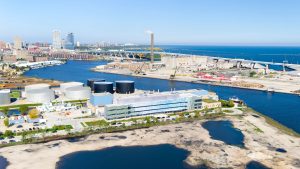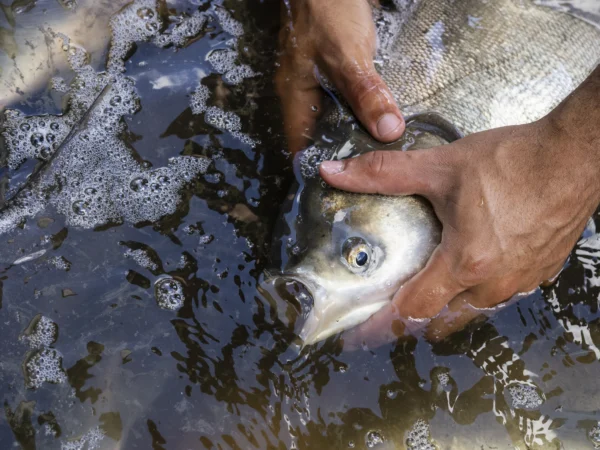
The School of Freshwater Sciences in Milwaukee
Some academic institutions that offer limnology courses and other water-related fields of study are criticized for not giving students enough field work.
Not the University of Wisconsin-Milwaukee’s School of Freshwater sciences.
It’s located on the Milwaukee Harbor. And when you open the door from the first-floor classroom, you can board directly onto a boat on Lake Michigan.
It’s not just any boat, either. It’s the only research vessel operating year-round on Lake Michigan, to help students understand the inner workings of the Great Lakes in all four seasons.
When I was at the Water Leaders Summit in Milwaukee recently, Assistant Dean for Advancement Eric Leaf was able to give me a tour of the largest water-focused academic research institution on the Great Lakes.
I viewed baby sturgeons in special tanks and saw the spot where UWM’s Great Lakes Genomics Center tracks DNA. And I even boarded the famous 72 foot-long vessel called “Neeskay.” It’s a name that comes from the Ho-Chunk, a Wisconsin Native American tribe. The name means “pure, clean water.” The vessel contains wet and dry lab facilities for chemical, physical, biological and geological sampling and analysis, including a Seabird CTD profiler, rosette sampler, hydrographic casts, current meter deployment, a surface water temperature chart recorder, vertical and horizontal net tows, trawling, dredging, box coring and sediment sampling. The Neeskay is also equipped for support of SCUBA-assisted research and small ROV operations.
The Neeskay was once an Army T-boat used for tug and transport duties in the Korean War. It has powered scientific expeditions around the lakes since 1970. It was built in 1953 and Leaf admits: it’s showing its age of late. The school is in the process of designing a larger boat that will become a unique floating classroom on the Great Lakes and is building an endowment to help fund the project.
The school currently has 70 masters and PhD students who are often directly involved in major research projects or work with external partners in internships.
97 percent of UWM’s School of Freshwater Sciences graduates are employed in water-related fields, with positions in industry, government, higher education and not-for-profit organizations.
Here’s my interview with UWM’s School of Freshwater Sciences Assistant Dean for Advancement Eric Leaf:
(Editor’s note: there are several other institutions that also offer degrees involving the study of the Great lakes. We’ll be featuring these institutions throughout the coming year.)
Featured Image: Wisconsin-Milwaukee School of Freshwater Sciences, Photo by city.milwaukee.gov






